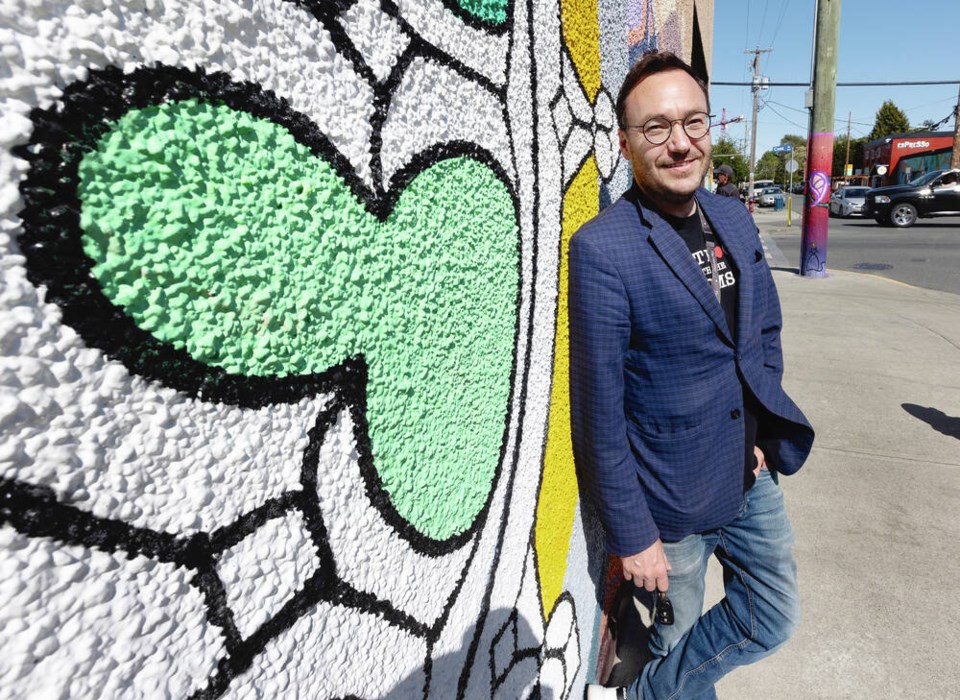When one of the first informal supervised drug consumption sites opened in Greater Victoria in 2017, it quickly outgrew its space.
It was housed in a shipping container in the courtyard of Our Place Society and only had capacity for three people. That grew to seven when a second shipping container was added.
The need for greater access to supervised consumption sites couldn’t be ignored, said Fred Cameron, director of programs at Solid, a grassroots organization staffed by people with lived experience of drug use.
Drug users were already watching out for each other and responding to overdoses at Solid’s headquarters and elsewhere in the city at the time.
“But this was much more official. It had paramedics working there. So it was the first of its kind here,” Cameron said.
Victoria now has four overdose-prevention sites where people can use substances under the supervision of trained staff, including one site dedicated to those who smoke drugs, as well as prevention sites in housing facilities.
The number of supervised consumption sites and services for people who use drugs has grown since the public health emergency was declared for B.C.’s toxic drug poisoning crisis in 2016, but it’s not keeping pace with need, advocates say.
The inhalation site, which opened last November in a temporary spot on Pandora Avenue while a permanent building is under construction, is one of the busiest sites on the Island, with capacity for 10 people at a time, Cameron said.
Opening an inhalation site has been “the biggest victory,” because smoking is the entry point to drug use for most people and there are significantly more people who use by inhaling, Cameron said.
“So the people that are first coming into the community were getting no support,” he said.
Operating an inhalation site is a challenge because of laws to protect staff from working in smoking environments. Solid has found ways to separate staff from smoking rooms with walls and windows so they’re not exposed to smoke, but can still supervise people using drugs, Cameron said.
Solid now has about 3,000 members and 100 staff, and has transformed from an activist group to a service provider since it opened in 2003, Cameron said.
The group focuses on ensuring lived experience guides the response to the crisis.
“Trying to throw money at a problem that, by nature, hides from the system isn’t going to work without the help of people from the community,” he said.
While the public has become more aware and accepting of drug use over the years, the unregulated drug supply has become more unpredictable and more potent, leading to greater risk for those using.
The newest phase of the crisis has seen a proliferation of non-opioid sedatives mixed with opioids, creating a “perfect storm” for increasing numbers of deaths, said Corey Ranger, a clinical nurse specialist for AVI health and community services who works in Victoria, Nanaimo, Campbell River and the Comox Valley with a focus on prescribing safer supply.
In Victoria, 49 people have died from toxic drug overdoses since the start of the year. In Nanaimo, that number is 45.
Ranger works with the Victoria Safer initiative, a program funded through the federal government that offers pharmaceutical alternatives to the toxic unregulated drug supply. The majority of people in the program are accessing pharmaceutical fentanyl, he said, which sets it apart from other safer supply programs, which generally supply hydromorphone.
The program is monitored and evaluated and has been shown to reduce risk for overdose, improve access to care and improve overall health and function as defined by the participant, Ranger said.
The problem, he said, is that it can’t meet demand. “There’s a number of people who would benefit from being able to access it, but they may not qualify because they don’t have an opioid-use-disorder diagnosis. Or simply there’s not enough room.”
Safer Victoria supports about 75 to 100 people. In Victoria, about 500 people are able to access a safer supply through various avenues, Ranger estimates. Across the province, only about five per cent of those in need are able to participate in safe supply programs, leaving many using drugs without safer options, he said.
Many people in need aren’t eligible for safe supply programs, such as those who use episodically, who tend to have lower tolerances, which means greater risk when they do use.
Youth are also generally excluded from the programs, and greater supports are needed for Indigenous-led programming, because Indigenous people are over-represented in overdose deaths, Ranger said.
Ranger wants to see action from the provincial and federal governments to replace the unregulated drug supply with safer supply options that can be delivered outside of a prescription model, through public health and compassion clubs.
“As it stands right now, all our eggs are in the prescribed safer-supply basket. And that is an accessible option for a very small percentage of the number of people who actually need it,” he said.



